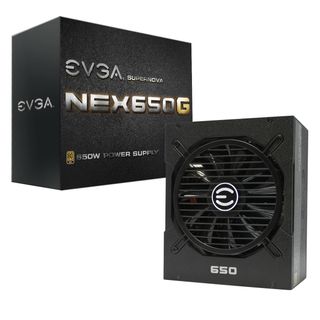
This is a sponsored post.
Virtual reality is here, and even though it’s new, the technology is really impressive. However, to actually run VR games, you’re going to need a fairly powerful machine. If you’re looking to build a new PC or upgrade your existing one, the components in this list will be perfect for transporting you into the virtual world.
Intel® Core™ i7-6700K
The Intel® Core™ i7-6700K has been around for a little over a year now, and it’s still one of the best processors available. PC Gamer likes the slightly less powerful i5-6600K a lot due to the overclocking potential and price point, but the Intel® Core™ i7-6700K has a higher clock speed and it’s better at multitasking thanks to the hyper-threading.
It’s a quad-core processor with a hefty 4.0GHz base clock speed, with a max turbo frequency of 4.2GHz. Plus, it has some serious overclocking potential if you’re into that sort of thing and have a good cooling solution. Another bonus it has over the i5-6600K is that 8MB cache, meaning it’s quicker and more efficient at grabbing data from the memory.
Nvidia GeForce GTX 1080
To run virtual reality, you need a good GPU. This is because in order for games to not make you want to throw up, they need to run at 90 frames per second. If you’re looking for the best graphics card around, barring the Titan X which costs well over $1,000, then you’re going to want to get an Nvidia GTX 1080. Technically, you only need a GTX 970 to run VR games, but you’ll definitely be wanting something beefier as time goes on in order to run the latest games.
PC Gamer Newsletter
Sign up to get the best content of the week, and great gaming deals, as picked by the editors.
The EVGA GeForce GTX 1080 FTW DT Gaming ACX 3.0 edition is a good bet, especially if you’re only going with a single GPU system, as it doesn’t have a blower-cooler fan. If you’re looking to go SLI and have two graphics cards (probably not necessary at this point, but it’s your money), then you might want to consider a couple of Founder’s Editions.

Gigabyte GA-Z170N-Gaming 5
As for the motherboard, if you’re going for a nice compact, yet powerful build, the Gigabyte GA-Z170N-Gaming 5 is a good way to go. Again, if you’re going to be putting multiple graphics cards in your machine, you’ll need to upgrade this, but this is a good motherboard with plenty of features for a reasonable price.
The GA-Z170N-Gaming 5 supports USB 3.1 Type-C, you know, the USB connector which fits either way up (it’s also faster). It also supports M.2, the new interface standard which will speed up your drives and unlock your SSD’s full potential.
16GB G.Skill Ripjaws V Series DDR4-2400
RAM is generally pretty cheap these days, which means you can usually splash the cash on the best around. The G.Skill Ripjaws V Series DDR4-2400 are great, and you can grab 16GB easily for under $100. These sticks are clocked at a fairly speedy 2666MHz, so they’ll be just fine for gaming and multitasking. Upgrade to 32GB if you want, but 16GB should be sufficient for most people.
Intel SSD 512GB 600p Series + 1TB Western Digital Blue
These days you’re going to want a solid state drive to get the full performance out of your games. They’re still more expensive than hard drives, and generally don’t have as much storage, but the difference in speed is undeniable. Plus, now M.2 is here, your storage is sped up even more compared to the old 2.5 inch SATA and mSATA standards. You’ll want a nice 512GB Intel M.2 600p as your main drive to run your operating system and games off of. This one has sequential read / write speeds on 1,775 / 560 MB/s, and random read / write speeds of 128,500 / 128,000 MB/s. The higher in capacity you go, the better the performance becomes. Then if you simply want some extra bulk storage, you can grab a hard drive.
The 1TB Western Digital Blue can often be found for under $50, and its 7200 RPM is quicker than you’d find on most basic drives which run at 5400RPM. It’s still nowhere near as fast as an SSD, but if you’ve got lots of files that need storing, you can’t go wrong with this hard drive.

EVGA SuperNOVA G1 650W
The main thing you have to look at when buying a new power supply is its efficiency rating. Anything below 80 Plus Gold isn’t worth your money, and you’ll also want a nice lengthy warranty. The EVGA SuperNOVA G1 650W comes with a 10 year warranty, and will provide plenty of power for your build. Plus, this power supply is modular, meaning any cables you aren’t using you can just take out of the case. The last thing you want is unused cables lingering around taking up space.
Phanteks Enthoo Evolv ITX
Finally, the case. There’s a whole bunch of cases out there, and you’ll want something roomy with some good features and good cooling options. The Phanteks Enthoo Evolv ITX is a compact case, however it’s got room for a 13 inch graphics card inside, which is more than enough for the GTX 1080.
The case also has a PSU partition that hides the HDD cage when the windowed side panel is off. Plus, the window is tinted, meaning you can see inside the case, but the lights within won’t shine out too brightly. As an added bonus, the Enthoo Evolv has integrated cable management, and it has even been designed with watercooling in mind, if you want to make the leap in the future.
